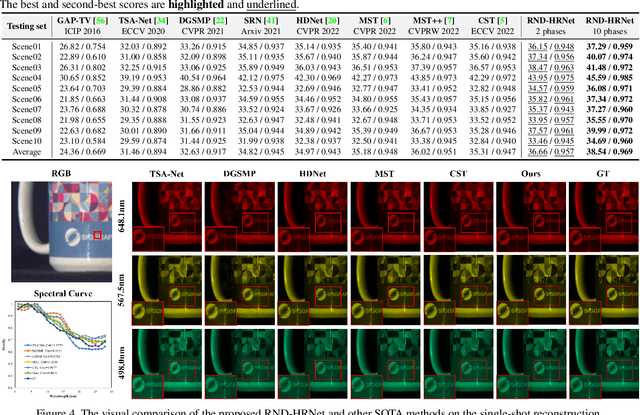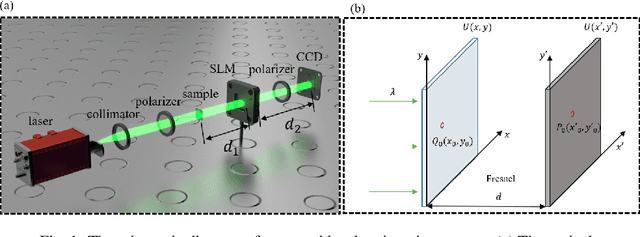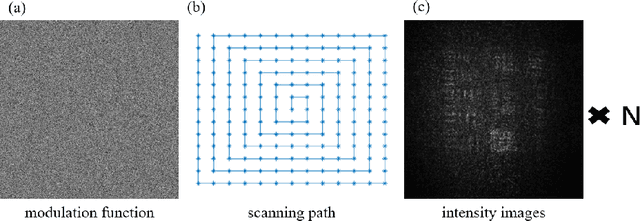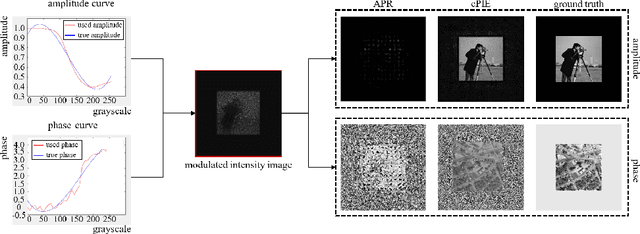Wenzhen Zou
RadioDUN: A Physics-Inspired Deep Unfolding Network for Radio Map Estimation
Jun 10, 2025Abstract:The radio map represents the spatial distribution of spectrum resources within a region, supporting efficient resource allocation and interference mitigation. However, it is difficult to construct a dense radio map as a limited number of samples can be measured in practical scenarios. While existing works have used deep learning to estimate dense radio maps from sparse samples, they are hard to integrate with the physical characteristics of the radio map. To address this challenge, we cast radio map estimation as the sparse signal recovery problem. A physical propagation model is further incorporated to decompose the problem into multiple factor optimization sub-problems, thereby reducing recovery complexity. Inspired by the existing compressive sensing methods, we propose the Radio Deep Unfolding Network (RadioDUN) to unfold the optimization process, achieving adaptive parameter adjusting and prior fitting in a learnable manner. To account for the radio propagation characteristics, we develop a dynamic reweighting module (DRM) to adaptively model the importance of each factor for the radio map. Inspired by the shadowing factor in the physical propagation model, we integrate obstacle-related factors to express the obstacle-induced signal stochastic decay. The shadowing loss is further designed to constrain the factor prediction and act as a supplementary supervised objective, which enhances the performance of RadioDUN. Extensive experiments have been conducted to demonstrate that the proposed method outperforms the state-of-the-art methods. Our code will be made publicly available upon publication.
Progressive Content-aware Coded Hyperspectral Compressive Imaging
Mar 17, 2023



Abstract:Hyperspectral imaging plays a pivotal role in a wide range of applications, like remote sensing, medicine, and cytology. By acquiring 3D hyperspectral images (HSIs) via 2D sensors, the coded aperture snapshot spectral imaging (CASSI) has achieved great success due to its hardware-friendly implementation and fast imaging speed. However, for some less spectrally sparse scenes, single snapshot and unreasonable coded aperture design tend to make HSI recovery more ill-posed and yield poor spatial and spectral fidelity. In this paper, we propose a novel Progressive Content-Aware CASSI framework, dubbed PCA-CASSI, which captures HSIs with multiple optimized content-aware coded apertures and fuses all the snapshots for reconstruction progressively. Simultaneously, by mapping the Range-Null space Decomposition (RND) into a deep network with several phases, an RND-HRNet is proposed for HSI recovery. Each recovery phase can fully exploit the hidden physical information in the coded apertures via explicit $\mathcal{R}$$-$$\mathcal{N}$ decomposition and explore the spatial-spectral correlation by dual transformer blocks. Our method is validated to surpass other state-of-the-art methods on both multiple- and single-shot HSI imaging tasks by large margins.
Lensless coherent diffraction imaging based on spatial light modulator with unknown modulation curve
Apr 08, 2022



Abstract:Lensless imaging is a popular research field for the advantages of small size, wide field-of-view and low aberration in recent years. However, some traditional lensless imaging methods suffer from slow convergence, mechanical errors and conjugate solution interference, which limit its further application and development. In this work, we proposed a lensless imaging method based on spatial light modulator (SLM) with unknown modulation curve. In our imaging system, we use SLM to modulate the wavefront of object, and introduce the ptychographic scanning algorithm that is able to recover the complex amplitude information even the SLM modulation curve is inaccurate or unknown. In addition, we also design a split-beam interference experiment to calibrate the modulation curve of SLM, and using the calibrated modulation function as the initial value of the expended ptychography iterative engine (ePIE) algorithm can improve the convergence speed. We further analyze the effect of modulation function, algorithm parameters and the characteristics of the coherent light source on the quality of reconstructed image. The simulated and real experiments show that the proposed method is superior to traditional mechanical scanning methods in terms of recovering speed and accuracy, with the recovering resolution up to 14 um.
 Add to Chrome
Add to Chrome Add to Firefox
Add to Firefox Add to Edge
Add to Edge